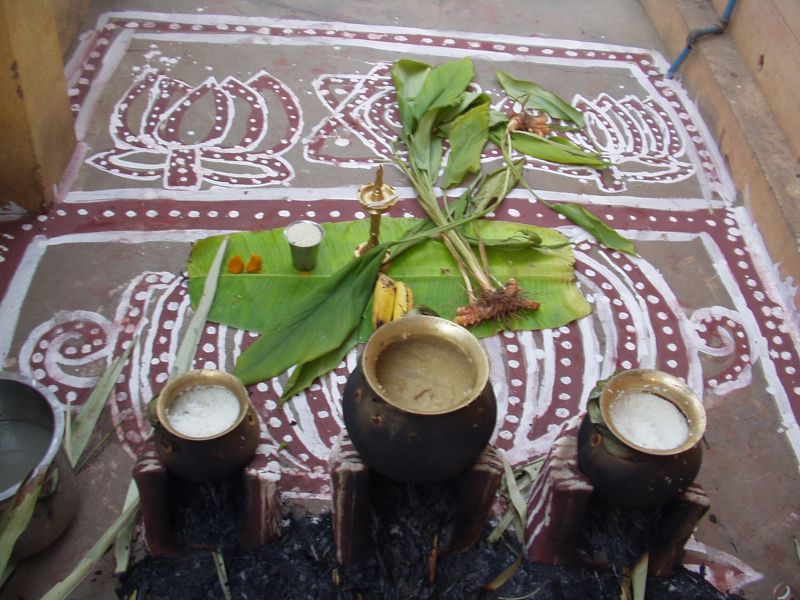Pongal or Sankranti is celebrated a harvest festival, when the month Margazhi or Dhanura comes to an end. The month that starts with the festival is Thai or Markara. It also marks the beginning of Uttarayana, a six-month period during which the sun moves north. On festival day the sun starts traveling TICs to the north and Uttarayana, a propitious period where all the essential functions are held starting.
The festival is celebrated with the same name; to mark the end of winter and celebrate the beginning of spring. In most parts of northern India, it is celebrated as Lohri and Assam as Bhogali Bihu.
In South India, he is known as Pongal in Tamil Nadu, Sankranthi Or Yellu Bella in Karnataka, Sankranti in Andhra Pradesh, Makara Sankranti in Maharashtra and Makaravillaku in Kerala.
Pongal, Tamil Nadu:
Pongal is a well-known festival for the people of Tamil Nadu and is celebrated for four days! The first day is Bhogi, which is celebrated to symbolize the end of the old and the beginning of a new period. Old things are limited to flames and made for the new crop and the new bright beginning.
The second day is Pongal. On this day, the sun god is worshiped. Profitable harvest and cooking in a lush harvest. The court is offered to God of the Sun. Festival festivities are best seen in villages where he is persecuted in a very traditional way. The courtyard of Pongal is cooked outside the houses in the courtyards. Traditional wood boilers and earthen pots are used. Prayers and elaborate rituals follow the puja offered to the sun god.
The third day is the day Maatu Qui Pongal is to worship the cow. An important animal for people in agriculture The cows of the house are washed, decorated, venerated and then driven. In cities, dairy farmers bring their cows to their customers so they can offer puja. The popular game of Jallikattu, which refers to money-binding packets on the horns of bullfights trying to snatch men from their sisters, hugging and clinging to an em, will take place that day.
The last day of Pongal is Kaanum Pongal. It is served with sugar cane, bananas and betel nut on the day of the day. Families spend the day outdoors, visiting or in public places.
Kolam with rice paste is a common sight everyday of the festival. The designs are eye-catching with their intricate pattern and thoughtful size.
In the land of Kannadigas Sankranti with Yellu Synonym (sesame) and bella (jaggery). Celebrations include cleaning the house on the eve of the festival. On the day of the party, mango leaves are used to decorate the main door. Rangolien with different colors decorate the sleepers. People prepare rice and Moong Dhal Kichdi or huggi. A sweet dish of rice and moong dhal is also prepared. Freshly harvested vegetables are used in the preparation of the party. At events, people exchange Yellu and Jaggery. The mixture also contains coconut and dry peanuts. It is believed that this exchange ensures a good and lasting relationship between individuals. In rural areas of Karnataka, Sankranthi celebrations are more traditional and sophisticated.
Sankranthi, Andhra Pradesh and Telangana:
As in Tamil Nadu, Andhra Pradesh and Telangana Sankranthi celebrate a four-day period. On Bhogi, the first day, a campfire is the bed to burn old and unwanted things before the traditional bath. The next day is Sankranthi, when pongali, a rice pudding and sweet dishes like ariselu, which are rice cakes, are prepared. The third day is Kanuma, where animals are decorated and events like them, bullfights and forbidden cockfights are also sometimes included. The fourth day is Mukkanuma. The festivals offer prayers to the Sun of God, Mahabali and Godadevi. Another highlight is the gift and the gift of the pumpkin.


No Comment